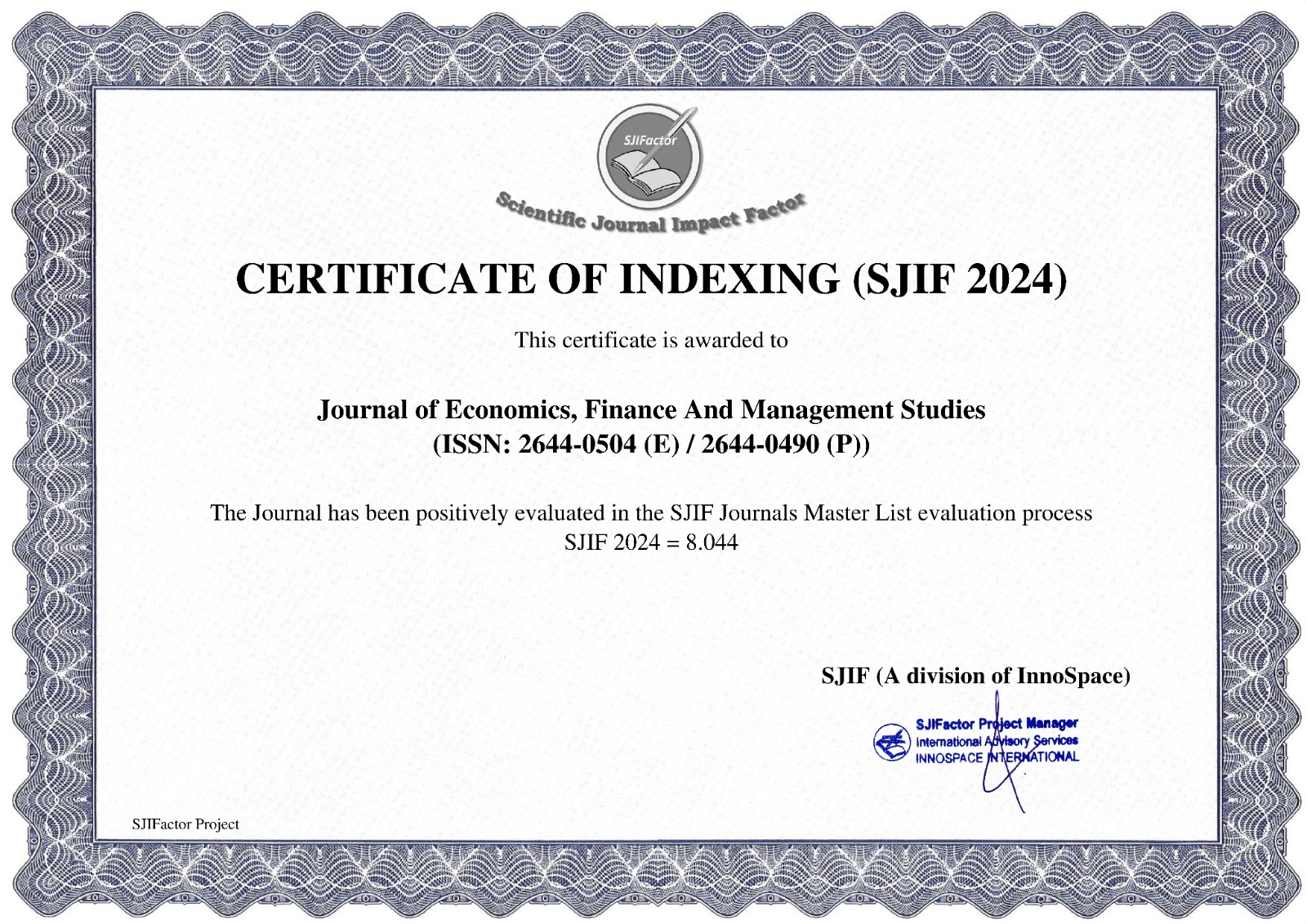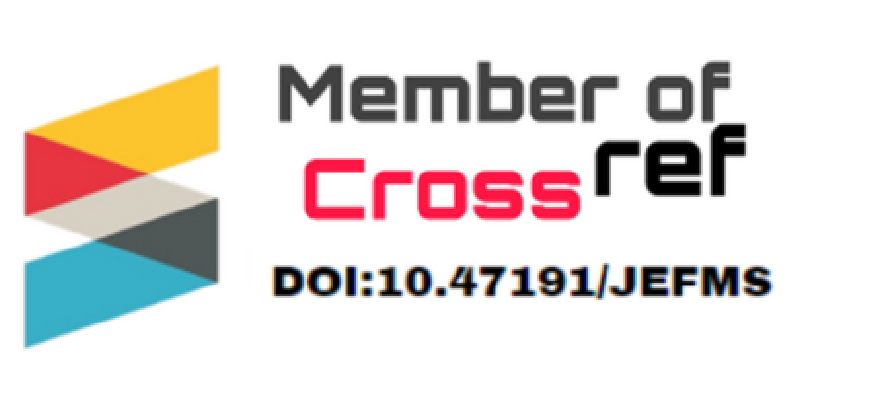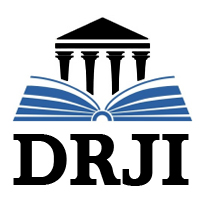The Fintech Frontier: The Impact of Digital Banking on Palestine’s Financial Future
1Mohammed Bayyoud, 2Firas S. Q. Barakat, 3Nermeen Ahmad Sayyad
1Department of Financial and Banking Sciences. Faculty of Economics and Business. Al-Quds University. Main Campus, Jerusalem -Palestine
2Department of Accounting. Faculty of Economics and Business. Al-Quds University. Main Campus, Jerusalem -Palestine
3Department of Business Administration & Marketing. Faculty of Economics and Business. Al-Quds University. Main Campus, Jerusalem -Palestine
https://doi.org/10.47191/jefms/v8-i2-17
ABSTRACT:
Technologies has the capacity to improve financial inclusion and provide access to financial services in Palestine. The study examines mobile phone ownership, internet accessibility, and FinTech literacy as factors influencing digital banking adoption in Palestine, employing logistic regression, chi-square tests, and random forest classifiers. The logistic regression model indicates that mobile phone owners and internet users are more inclined to utilize digital banking services. Financial literacy and consumer education are essential for FinTech adoption, as is awareness. The Chi-Square test reveals no significant correlation between digital banking usage and geographic region, indicating that location does not substantially influence adoption. The Random Forest model effectively predicts digital banking adoption across three consumer segments: early adopters with high technological access, moderately educated users with limited internet connectivity, and individuals with low digital literacy and technology access. The report advocates for policies aimed at enhancing mobile phone accessibility, internet infrastructure, and financial literacy to foster inclusive digital banking in Palestine. In summary, while digital banking holds the potential to transform Palestinian financial services, it must address technical, educational, and regulatory challenges. This research provides policymakers, financial institutions, and regulators with actionable insights to enhance financial inclusion and the advancement of digital banking in Palestine.
KEYWORDS:
Digital Banking, FinTech, Financial, Palestine
REFERENCES:
1) Ahmed, S., & Sur, S. (2023). Alteration in the use patterns of digital banking services by Indian rural MSMEs during the demonetization period and the constraints associated with the COVID-19 epidemic. Vilakshan-XIMB Management Journal. https://emerald.com.
2) Azzabi, A., & Lahrichi, Y. (2023). Determinants of bank performance: Current status and prospective research directions. [PDF].
3) Boskov, T. (2019). Digital banking and financial accessibility. [PDF].
4) Chauhan, S., Akhtar, A., & Gupta, A. (2022). A evaluation of customer experience in digital banking and prospective research avenues. International Journal of Quality and Service Sciences, 14(2), 311-348. https://doi.org/[Insert DOI]
5) Demko-Rihter, J., Sekerez, V., Spasić, D., & Conić, N. (2023). The overlooked emphasis on the management dimension of transfer pricing strategy in multidivisional corporations—A case study of Serbia. Systems. https://mdpi.com
6) Ediagbonya, V., & Tioluwani, C. (2023). The function of fintech in promoting financial inclusion in developing and emerging markets: Issues, difficulties, and possibilities. Technological Sustainability. https://essex.ac.uk
7) Hasan, M. M., Yajuan, L., & Khan, S. (2022). Advancing China's inclusive finance via digital financial services. International Business Analysis. https://researchgate.net
8) Hurani, J., Abdel-Haq, M. K., & Camdzic, E. (2024). Challenges of FinTech deployment in the Palestinian financial system. International Journal of Financial Studies, 12(4), 122. https://mdpi.com
9) Ozili, K. (2018). Effects of digital finance on financial inclusion and stability. [PDF].
10) Mhlanga, D. (2024). The significance of big data in financial technology for promoting financial inclusion. ncbi.nlm.nih.gov
11) Mujahed, H. M. H., Musa Ahmed, E., & Samikon, S. A. (2022). Determinants affecting the desire of Palestinian small and medium companies to embrace mobile banking. Journal of Science and Technology Policy Management, 13(3), 561-584. https://researchgate.net
12) Ozdemir, B. (2022). A strategic roadmap for small and medium-sized banks from a Canadian viewpoint: Transitioning from startup to mid-size and beyond. Journal of Risk Management in Financial Institutions, 15(3), 220-244. https://doi.org/[Insert DOI]
13) Persson, S. (2024). Enabling subcontractors in Swedish construction with blockchain technology for automated payment systems. chalmers.se
14) Powers, C. (2024). Banking in the profession. In Resisting Domination in Palestine: Mechanisms and Techniques of Control, Coloniality, and Settler Colonialism (p. 108). https://doi.org/[Insert DOI]
15) Shehadeh, H. (2023). Palestine in the digital realm: The establishment of a virtual floating country. Humanities. https://mdpi.com
16) Sewpaul, S. (2018). Digital tactics used by top bank executives in Mauritius to enhance customer service. [PDF document].
17) Sanyaolu, T. O., Adeleke, A. G., Azubuko, C. F., & Osundare, O. S. (2024). Investigating fintech technologies and their potential to revolutionize the future of financial services and banking. International Journal of Scholarly Research in Science and Technology, 5(01), 054-073. https://researchgate.net
18) van Zanden, J. L. (2023). Analyzing the correlation between information and communication technologies and financial accessibility in Africa. Journal of Business and Economic Alternatives. https://resdojournals.com
19) Yue, P., Korkmaz, G., Yin, Z., & Zhou, H. (2022). The emergence of digital finance: Financial inclusivity or a debt trap? [PDF].
















